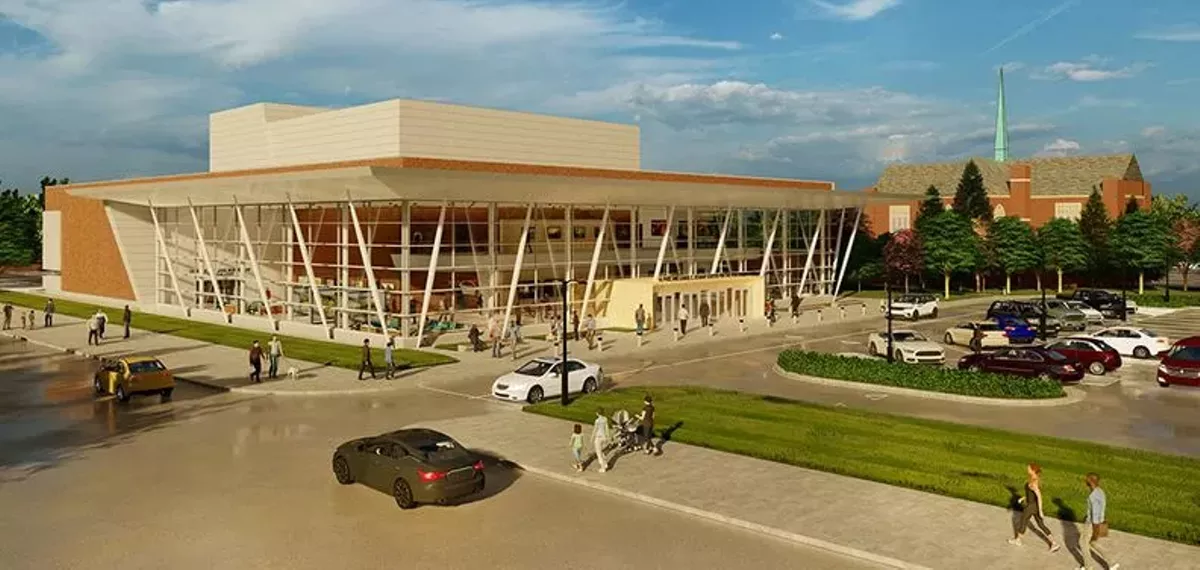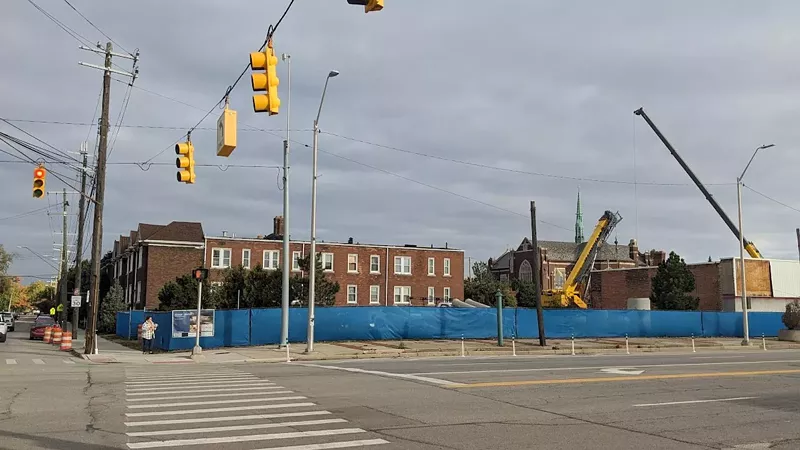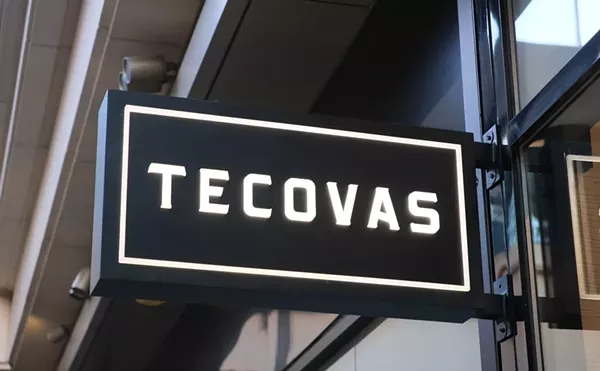Brazen Grosse Pointe group gets green light for parking lot in historic corner of Detroit
The Urban Renewal Initiative Foundation wants to build a $45M performing arts center at border in Grosse Pointe Park


Audio By Carbonatix
[
{
"name": "GPT - Leaderboard - Inline - Content",
"component": "35519556",
"insertPoint": "5th",
"startingPoint": "3",
"requiredCountToDisplay": "3",
"maxInsertions": 100,
"adList": [
{
"adPreset": "LeaderboardInline"
}
]
}
]
A controversial plan to turn a prominent historic corner of Detroit into a parking lot for a $45 million performing arts center along the border of Grosse Pointe Park received approval to move forward on Wednesday evening, despite opposition from preservationists and neighbors.
The Detroit Historic District Commission unanimously approved a request for crews to demolish the remains of a partially razed building on East Jefferson Avenue near Alter in the Jefferson-Chalmers neighborhood.
The HDC also issued the developer, Urban Renewal Initiative Foundation (URIF), a notice to proceed with its plans to pave a parking lot on historic land in Detroit, as long as it meets several conditions. The conditions include securing planning and zoning approvals, doubling the size of a tiny plaza with lighting and seating near the parking lot, and adding markers about the cultural and historic significance of the buildings that have since been demolished, including the historic Deck Bar.
URIF needed the approval to build the A. Paul and Carol C. Schaap Center for the Performing Arts and an adjacent art gallery next to the vacant lots in Grosse Pointe Park. The group had been criticized for brashly moving forward with the project despite a lack of approval from HDC.

The approval came despite a scathing report from HDC’s staff about the project’s likelihood of contributing excessive water in an area prone to flooding, the lack of community engagement, and the rear of the building facing Detroit.
In the report, HDC’s staff said the project is “historically inappropriate” and “would create an even larger void in the historic Detroit commercial street wall.”
HDC’s tentative approval is yet another blow to preservationists who have long complained that Detroit treats historic areas as nuisances.
During the meeting, opponents of the plan expressed concerns about flooding, URIF’s lack of communication, and the degradation of a historic area that has a lot of potential as larger swaths of Detroit are revitalized.
“Unlike most situations in Detroit where buildings that contribute to historic districts are allowed to linger and they become blighted and demolished, that did not happen here,” Jay C. Juergensen, a Jefferson-Chalmers resident and lead organizer for the Jefferson Chalmers WATER Project, which advocates for initiatives to address chronic flooding problems, tells Metro Times. “Grosse Pointe Park purchased the buildings, emptied them out, and destroyed the eastern edge of the historic corridor. We wish the commission had been more progressive. They are the last stop on the train, and they could have used their powers strategically and forced URIF to take action that would be more consistent with the secretary’s standards, causing them to contribute to the district in a more substantive way. I think it’s actually a scary precedent.”
Other groups, such as Change Is the Pointe, a Grosse Pointe and Harper Woods organization dedicated to racial justice, also spoke out against the project.
URIF submitted letters of support for its project from the Detroit Institute of Arts, Detroit Opera, the N’Namdi Center for Contemporary Art in Detroit, the Detroit Symphony Orchestra, and Jefferson East Inc., which helped establish the historic business district.
So far, URIF managed to raise $46 million of the required $55 million for the project, even though it didn't have approval from the Historic District Commission.
In April, the city filed a lawsuit against URIF for brazenly moving forward with the construction of the arts center without getting the proper permits and approvals.
A month earlier, a crew began demolishing a building that was partially on historic land. The portion of the building that was on Grosse Pointe Park land was razed, leaving a partially demolished eyesore in Detroit. The HDC’s staff said the building’s remains are “an immediate hazard to pedestrians on the Detroit sidewalk,” with “aluminum siding blowing off the building in the wind.”
Developed largely in the early 1900s, the commercial strip on Jefferson is one of the few remaining early 20th-century neighborhood commercial districts and contains architecturally significant buildings. It has been targeted for revitalization and is the site of the popular Jazz on Jefferson Festival. The district is surrounded by intact neighborhoods and includes more than 50 buildings, including two ballrooms, retail stores, banks, apartment buildings and four churches.
Subscribe to Metro Times newsletters.
Follow us: Google News | NewsBreak | Reddit | Instagram | Facebook | Twitter






